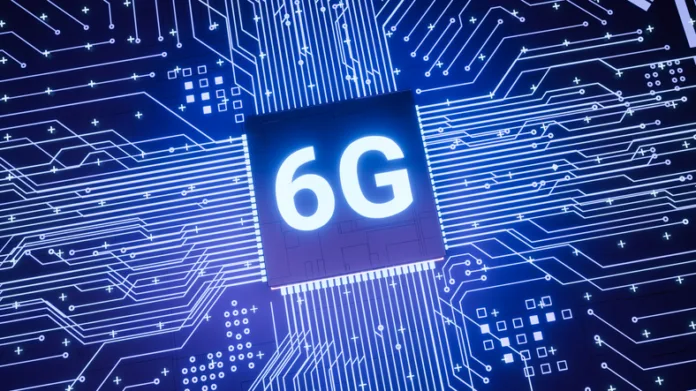The race to define the sixth generation of wireless technology is already underway, and at the heart of this evolution lies a transformative concept—6G intelligent metasurfaces. As demand for ultra-fast, low-latency, and ubiquitous connectivity accelerates, traditional methods of signal propagation and network architecture are reaching their limits. This is where intelligent metasurfaces, or reconfigurable intelligent surfaces (RIS), are poised to make a revolutionary impact.
In this article, we explore how 6G intelligent metasurfaces are becoming the foundation of next-generation wireless networks, their core functionality, potential use cases, and why they represent the next major leap in telecommunications.
What Are 6G Intelligent Metasurfaces ?
Metasurfaces are engineered, two-dimensional materials with properties that can manipulate electromagnetic waves in ways conventional materials cannot. When integrated with AI and networked systems, they become “intelligent,” capable of dynamically controlling signal reflection, absorption, and refraction in real time.
In the context of 6G, intelligent metasurfaces will allow wireless signals to be shaped and redirected with pinpoint accuracy. Instead of relying solely on physical antennas and base stations, 6G networks can incorporate metasurfaces embedded in walls, ceilings, vehicles, and even clothing—turning nearly any surface into a smart part of the wireless infrastructure.
Why 6G Needs Intelligent Metasurfaces
The leap from 5G to 6G is not just about speed—it’s about reimagining connectivity to support:
Terabit-per-second data rates
Ultra-low latency (<1ms)
Massive device connectivity (IoT, XR, autonomous systems)
Ubiquitous, seamless coverage across diverse environments
Traditional RF (radio frequency) systems struggle in complex, urban, or indoor environments due to signal attenuation and interference. 6G intelligent metasurfaces solve this by reshaping the wireless environment itself. They help eliminate dead zones, improve energy efficiency, and provide better control over signal paths.
Key Benefits of 6G Intelligent Metasurfaces
1. Dynamic Signal Control
Unlike fixed antennas, intelligent metasurfaces can adapt their properties in real time based on network conditions. This allows signals to be directed around obstacles, focus on moving targets, or avoid interference.
2. Energy Efficiency
6G networks powered by intelligent metasurfaces consume less energy, as signals can be transmitted more precisely without the need for excessive amplification or redundancy.
3. Enhanced Security
By controlling the physical path of electromagnetic waves, metasurfaces can help reduce eavesdropping risks and offer better physical-layer encryption.
4. Cost-Effective Infrastructure
Metasurfaces can be printed on low-cost substrates and deployed in high-density areas without large-scale installations. This makes them ideal for urban, industrial, and rural applications alike.
Real-World Applications of 6G Intelligent Metasurface
• Smart Cities
Buildings embedded with intelligent metasurfaces can become active components of communication networks—helping to manage traffic, monitor air quality, and support real-time surveillance systems.
• Autonomous Vehicles
Vehicles can communicate with roadside infrastructure, other vehicles, and satellites through intelligent metasurfaces on highways or even within the cars themselves.
• Healthcare Facilities
Hospitals using intelligent metasurfaces can ensure uninterrupted connectivity for remote surgeries, patient monitoring, and telemedicine—all with minimal latency.
• Augmented Reality (AR) and Virtual Reality (VR)
The immersive technologies of tomorrow require ultra-high bandwidth and low-latency environments. Intelligent metasurfaces help maintain uninterrupted high-speed connections, even in complex indoor spaces.
Challenges and Research Directions
While promising, the deployment of 6G intelligent metasurfaces faces several challenges:
Standardization: Global standards are still evolving around 6G and RIS technologies.
Manufacturing Complexity: Creating durable, cost-effective, and scalable metasurfaces remains a technical hurdle.
AI Integration: To function effectively, intelligent metasurfaces must be closely tied to AI-driven network controllers that can process environmental data in real time.
Security and Privacy: While offering new forms of protection, metasurfaces also introduce novel vulnerabilities that must be addressed.
Despite these challenges, academic and industrial research is advancing quickly. Nations including the U.S., China, and South Korea are investing heavily in metasurface technologies as part of their 6G strategies.
The Role of AI and Edge Computing
One of the unique aspects of 6G intelligent metasurfaces is their synergy with artificial intelligence and edge computing. Instead of relying on centralized cloud processing, metasurfaces can collaborate with local edge servers and AI algorithms to make real-time decisions.
For example, in a crowded stadium, intelligent metasurfaces can prioritize bandwidth toward emergency services, automatically reroute traffic for better signal quality, or dynamically block interference from rogue devices—all without human intervention.
Looking Ahead: What to Expect in the 2030s
As we progress toward full 6G deployment, intelligent metasurfaces will become as commonplace as Wi-Fi routers or fiber connections. They will be embedded in furniture, building materials, clothing, and even wearable devices.
In the 2030s, we can expect:
Full-scale metasurface integration in smart infrastructure
Autonomous RIS-controlled indoor and outdoor environments
Seamless connectivity across urban and remote locations
A redefinition of “network coverage” as dynamic and environment-based
Conclusion
6G intelligent metasurfaces represent a paradigm shift in how wireless communication is designed, deployed, and experienced. They empower a new generation of technologies that demand more than just speed—they require intelligence, adaptability, and seamless integration with the environment.
As industries and governments gear up for the 6G era, understanding and investing in intelligent metasurfaces is not optional—it’s essential. These innovations will not only shape the networks of tomorrow but also the way we live, work, and interact in a hyper-connected world.
